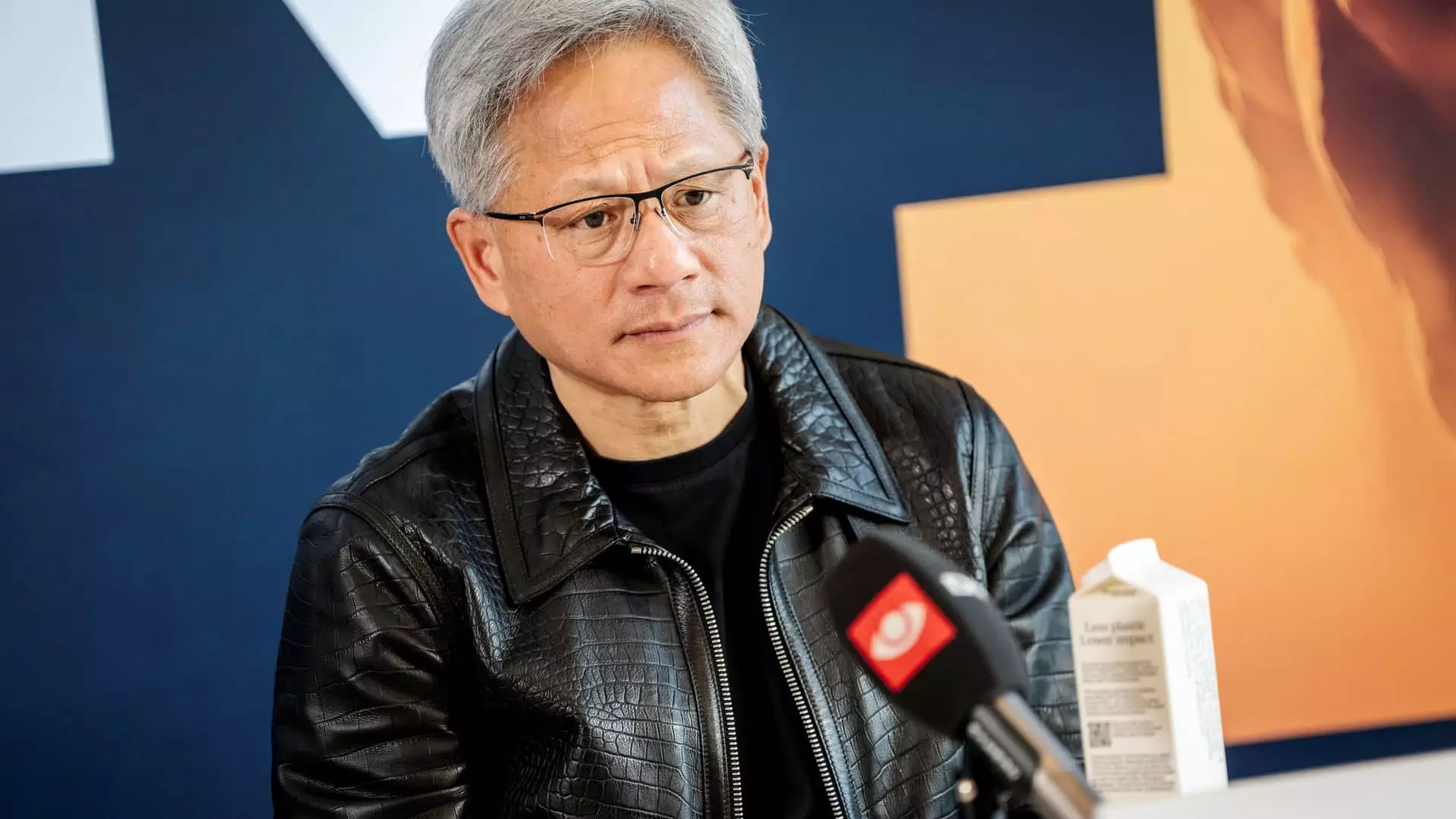Nvidia continues to retain a commanding presence in the burgeoning artificial intelligence (AI) chip market, boasting an impressive 80% market share, largely positioned as the favored graphics processing unit (GPU) for the development and deployment of generative AI applications. This predominant status is a remarkable feat, particularly in an ecosystem increasingly crowded with competitors. As Nvidia nears the unveiling of its third-quarter earnings report, stakeholders are keenly interested in whether the company can sustain its remarkable growth trajectory, particularly as the enthusiasm surrounding AI matures into its third consecutive year.
The significance of Nvidia’s market leadership cannot be overstated. Analysts have drawn attention to Nvidia stepping into “uncharted territory” regarding its stock valuation and operational performance. HSBC analyst Frank Lee reflects a sentiment of cautious optimism, suggesting that, despite potential industry headwinds, Nvidia displays promising growth indicators that can carry into the 2026 data center strategy. This forecast emphasizes not only the rising expectations tied to AI development but also the potential obstacles that the tech giant may navigate in maintaining its impressive growth amidst escalating market pressures.
Looking ahead, Nvidia’s growth will pivot significantly on the success of its next-generation Blackwell chipset, which has recently begun shipping to major corporations, including Microsoft, Google, and OpenAI. This transition to the new Blackwell architecture could mark a pivotal point for the company, with investors anticipating insights on customer demand during the upcoming earnings call. Moreover, Nvidia CEO Jensen Huang will likely address mounting concerns regarding performance issues, such as overheating in Blackwell-based systems, which could signal challenges in the rollout process.
In a recent analysis, Raymond James analyst Srini Pajjuri outlined expectations of shipping approximately 100,000 Blackwell GPUs in the fourth quarter, a target he suggests may fall on the lower end of investor expectations. However, his sustained confidence in Nvidia, evidenced by a strong buy rating, indicates that the company’s long-term fundamentals remain solid—a reassuring perspective for those closely following the stock.
The stock price has seen a remarkable surge of nearly 19% since Nvidia’s last earnings report. This rapid appreciation is a testament to the stock’s meteoric rise, characterized by an eightfold increase since the launch of ChatGPT in late 2022. While such growth is striking, it does invite scrutiny regarding the sustainability of this momentum over longer time frames. Observations indicate that, though sales and margins have experienced a hefty increase, the forward price-to-earnings ratio approaching 50 may suggest that the stock is now entering territories that could pose risks for future growth.
In the most recent quarter, Nvidia reported an astounding 122% year-over-year sales growth, although this marked a decline from the rates seen earlier in 2023, which were as high as 265%. Despite this deceleration in growth, analysts anticipate revenues to reach approximately $33.12 billion, representing an 83% annual increase. The consensus expectation for earnings per share sits at around 75 cents, reflecting a persisting trend of robust profitability.
Notably, Nvidia’s data center business has dominated its revenue streams, accounting for nearly 88% of sales in the most recent quarter, thereby overshadowing its traditional gaming operations. The gaming division, including contributions from platforms like the Nintendo Switch, is expected to show only modest growth, estimated at around 6%. On the other hand, while Nvidia’s automotive chip business is relatively nascent, it is projected to experience growth of 38%, indicating potential untapped markets as the world increasingly pivots towards electric vehicles.
Ultimately, Nvidia’s success hinges upon its ability to maintain the momentum of its data center growth while effectively navigating the complexities of market demands and technological challenges. As investors await the company’s earnings report, the ongoing narrative of innovation, competition, and strategic pivots will play a critical role in shaping perceptions and expectations surrounding Nvidia’s future in the dynamic landscape of AI technology.


Leave a Reply